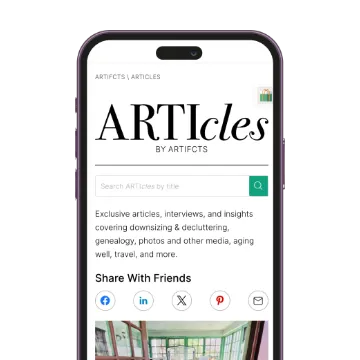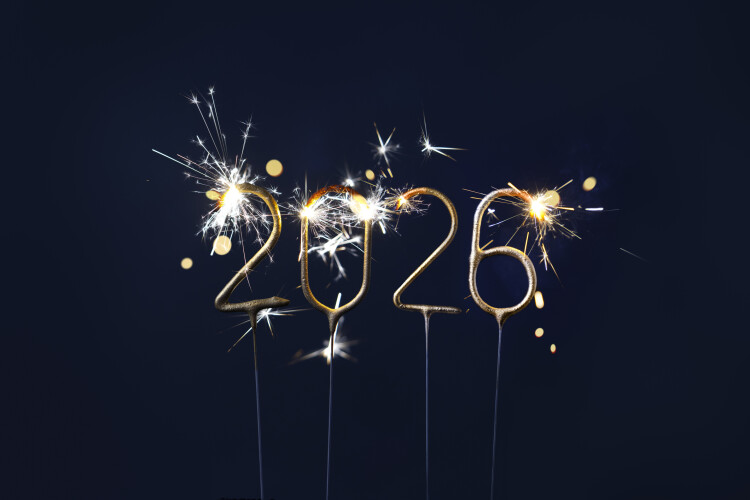We’ve all heard the expression “greeting card holiday,” sometimes even used against one of your personal favorites. So many love-hate relationships out there with national days for everything from your dog to your sibling to coffee and doughnuts.
Then there are the months generally preserved for themes of broad societal significance, like heart health, black history, hispanic heritage, and even family history. Hello October, and hello Family History Month!
This October we’re sharing a few ideas from the Artifcts Community to help even those of you who may think you have no interest in family history to find some value in a month dedicated to exactly that. Use the month as an excuse or opportunity to get to know and capture your own family history and legacy a bit better.
_________________
Hello, Family Genealogists (And Those In the Making)
An Artifcts community member once lamented to us, “I’ve spent so much time and money researching all of this history, and I have the files, but I really haven’t taken that next step to share with my extended or even immediate family. Without me they’d have to start over.”
And then she told us that all her research is locked up behind a subscription-paywall. Hmmm. If you can relate, here are some tips to help ensure your family history is not lost to the next generation:
- Purchase a second research subscription for someone who can pick up the research alongside you to carry it forward to the next generation. Guide them through the myriad of resources online and through special archives and libraries as well as in your own family collection. If you have a tech-savvy grandchild in the family, this may be the perfect way to spur intergenerational connection AND keep the family history/research going.
- Take a class or catch a speaker! You can find a plethora of them by searching online or go local. Check your library, community center, museums, or local genealogical society for special events this month (and beyond). Confernce Keeper has a wonderful listing of genealogy related conferences and events, a lot of them for free too. Share what you learn with your family and friends.
- Create a family videography to highlight key moments in your family’s history, roles family members have played in historical events, and the modern-day family branches. For beautiful, professional videographies, we adore Lori and her team at Whole Story Productions.
- Self-publish a book(let) to document your research findings in black and white. Distribute during a family reunion, taking preorders (and payments) ahead of time. If you need an assist in your family history, we recommend our partner at Legacy Tree Genealogists.
- At Artifcts you can share the family history behind old photos, cherished heirlooms, even Grandma's china! Your family members need not be Artifcts members to view the Artifcts you share with them. Want to make sharing your Artifcts with your family even easier? Create family invite-only circles for easy group sharing, and off you go! We recommend using a special tag like #NickersonFamilyAssociation to easily sort your collection. Some of genealogists at Artifcts also use the ‘Location’ field when they create an Artifct to list a URL or folder path where additional information is stored.
Memorable Family Dinners, Recipes, and More
You’ve been away from home for months or years, you return, and as you walk in the door, dinner is on, and you get that first smell of your favorite dish. Do you have the recipe? Who came up with it? Do you know the key steps? Special or secret ingredients?
Some family favorites are born directly out of the original farm-to-table concept, before it was so hip, and those origins become a key part of the family recipe story. You grew potatoes and found a million ways to prepare them. You had fresh citrus, wild asparagus, or vibrant rhubarb all around you, and the specialties of your youth reflect it. Capture that history!
- Start a virtual family dinner club. You could create a group online to swap recipes or go a step further and once a month someone is the virtual host. Send the recipe ahead (as an Artifct!) so everyone has the ingredients on hand. Then run your own cooking show and enjoy the meal together after.
- Collaborate on a special family recipe cookbook. Ask each member of your family to contribute their favorite recipe AND the story behind it. How did it come into your family? Are there any secret ingredients? Who made or makes it best? Create a cookbook that builds all the family history and the stories that go with those recipes. You’d be surprised, but even one generation removed, family members will start to lose track of the details never mind the actual ingredients or instructions.
- At Artifcts recipes, cookbooks, and treasured kitchen objects come alive through stories and histories, but also with supplementary video and audio snippets. Artifct your favorite recipes, add a video snippet of a crucial step, and share with your family. Our co-founder Heather Artifcted her mother's cranberry sauce AND included a video to show her teenage daughter how to know when you've got a good batch of cranberries.
Share the History
The reality is not all families have a family keeper, that person who by choice or default holds onto the heirlooms, photos, recipes, and slew of documents that represent generations of a family’s history. Or maybe you are the last keeper or recent inheritor of all this family history and are thinking, “Now what? I really don’t want this stuff.”
There’s a second reality that is important to recognize: family history is not only family history. Sometimes family history is part of local, national, or even global history. It offers clues to key figures, ways of living, and the social, political, and religious practices of a place in time. So, consider sharing pieces of your family history with the world through donations.
- Philanthropic donations. Consider galleries, libraries, research centers, foundations, and museums with specialties that may overlap with your items. Donations are not necessarily only in the realm of inherently valuable objects. Often, you guessed it, the story behind the object is the key. Don’t know the story either? That’s okay. Reach out to an institution, share your items, and give them the opportunity to tell you!
- Archival donations. Transform your personal family history into elements of a shared community history by offering your items to professional archives. What types of items might fit this category? As a starter: original works of fiction or non-fiction; scrapbooks, journals, letters, and diaries; original business materials (certificates, advertising, shares, board documents, voting records); media (photographs, slides, film, even websites too). You can learn more at the Society of American Archivists.
- At Artifcts, before you donate, Artifct the items to retain the family lore and history that’s relevant to you, and then share with family. Make sure no one else is interested in the item before you donate it, and attach any documentation related to your donation to the Aritfct. You can then rest easy knowing your family’s history will be in the capable professional hands of institutions that will preserve and protect them for generations to come.
Let's Talk Wills and Legacy
Hear us out. Wills may be about death, but they are also all about easing the burden on those we leave behind. We all too frequently ignore the items we've collected over time. And, no, they will not sort themselves into piles to sell, donate, or bequeath. First someone must go through it all, a family member or two, or maybe a specialist hired to help. And in the end, someone will have to make 1000s of decisions about what becomes of every single item. Do you really want to leave a burden as your legacy?
Wouldn’t you rather everyone be better prepared and informed? Not only will making a plan and creating documents make it easier for your family to pick up the pieces, but they can also help loved ones understand why you valued the items you are leaving behind. We've got some tips to help:
(Dramatically) Simplified checklist:
- Don’t have a Will? There are many wonderful estate planning attorneys in each community who can help you with this process. But this is an industry transformed by the digital revolution, and then some. If you are looking for a digital, self-guided approach, check out our fellow AARP AgeTech Collaborative partners at Trust & Will.
- Haven’t really seen your Will in a while? Give it a checkup. There's no time like the present. Add it to your to-do list this month!
- Confirm: Are the major themes covered?
-
-
- Estate
- Minor children
- Relatives with disabilities
- Retirement
- Powers of Attorney
- Living Will
- Stewardship of digital assets (profiles, accounts, photos, web pages, etc.)
- Is there a list of tangible assets referenced in your Will? Your Will may provide for a separate “Memorandum” that can be updated and changed at any time without making any changes to your Will.
-
-
- No list? Start. Just take a first cut by looking around the house (or your Artifcts collection!).
- Already have a list? Double check that it covers at least those items of greatest financial or heart (sentimental) value.
- At Artifcts, pick three or four of your most treasured items to Artifct and let your loved ones know why each item matters to you. Use the "In the Future" field to think through and record what you would like to happen to this item one day. Will it be passed down? Rehomed? Sold? Consider sharing the Artifct with your estate planner or attorney to list with other tangible assets referenced in your Will.
_________________
Artifcting Starter Resources
We have all sorts of helpful resources that we want to be sure you know about to take the pressure off and let the fun begin:
Inspiration Checklists
Videos on YouTube
Artifcting Quick Tips
###
© 2025 Artifcts, Inc. All Rights Reserved.
 One of our co-founder Heather's favorite holiday cards. Sorry, this Artifct is private!
One of our co-founder Heather's favorite holiday cards. Sorry, this Artifct is private!














